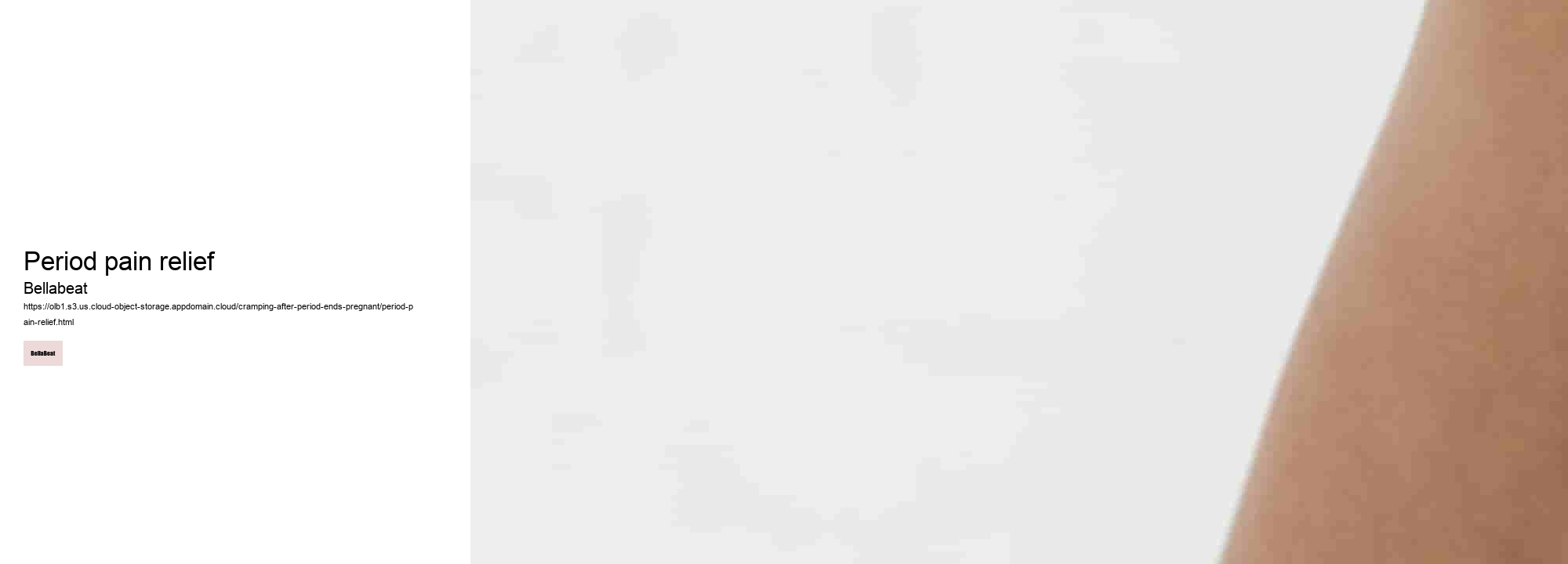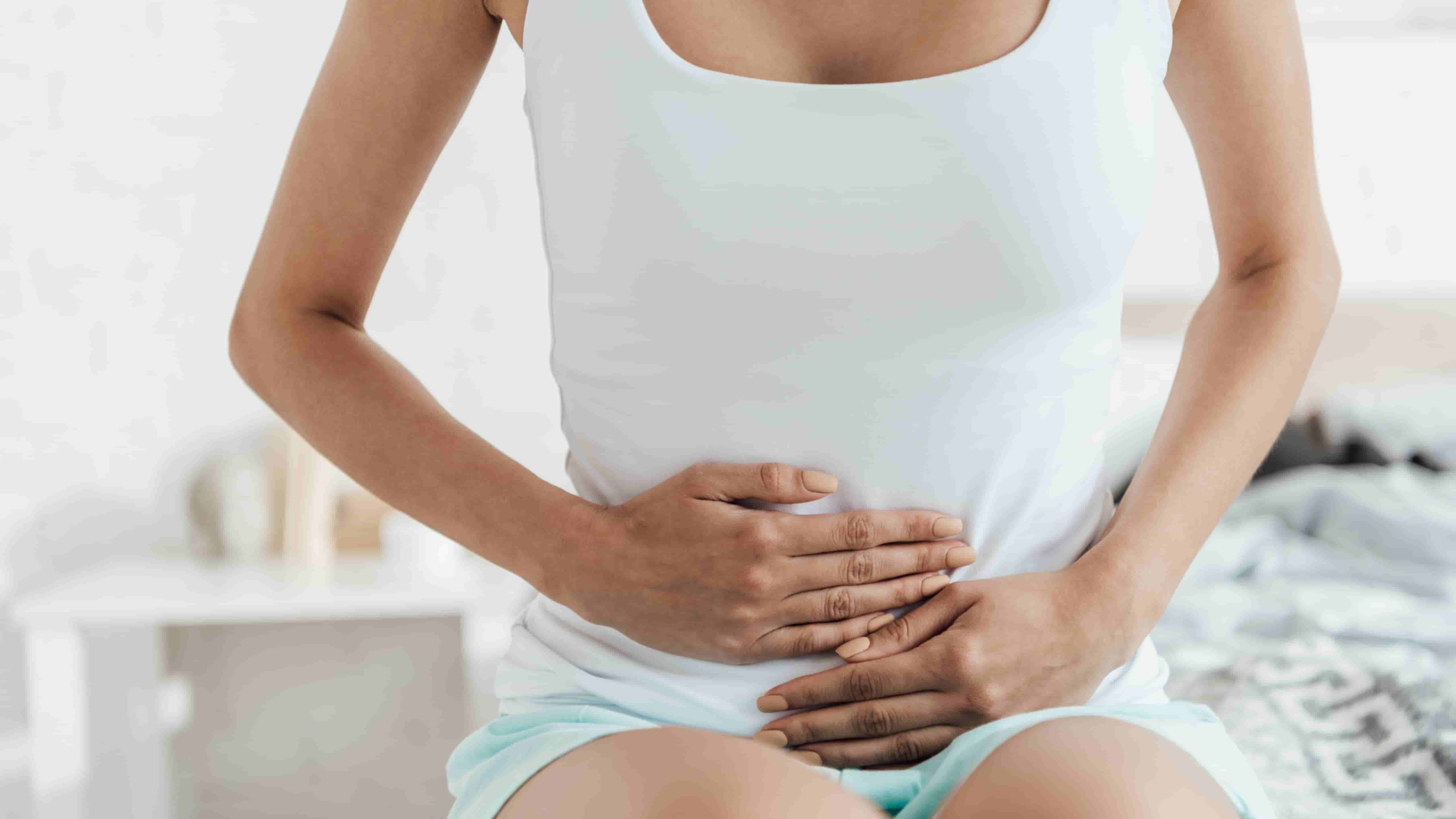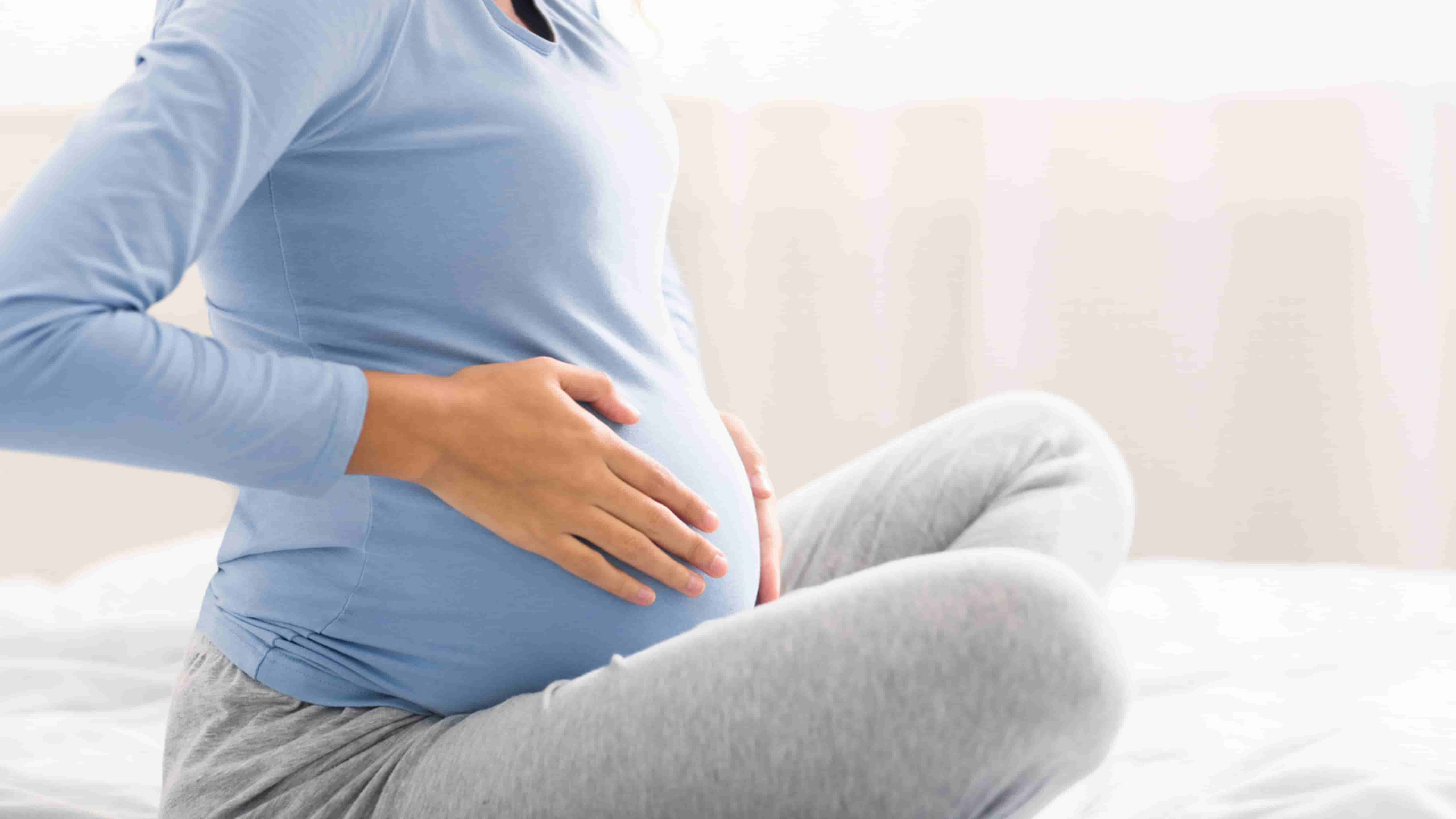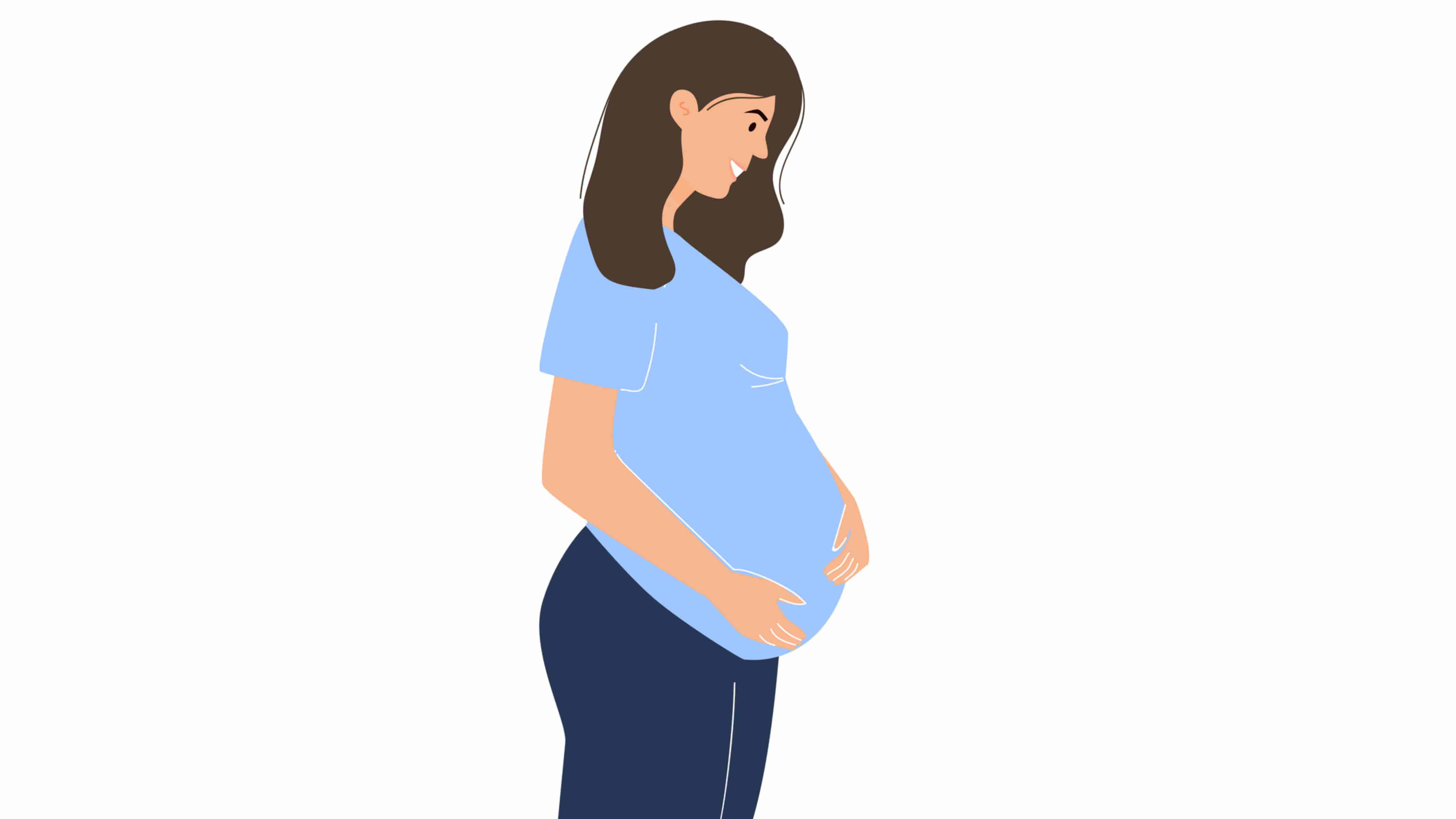

Rest and Relaxation: Reducing physical activity can lessen muscular strain on your abdomen. Yet, when these abdominal contortions persist beyond the epilogue of one’s period, questions invariably arise. Lastly but importantly, stress management through mindfulness practices such as meditation or deep-breathing exercises can contribute significantly towards reducing physical tension that might manifest as abdominal cramping. However, while these spasms are often attributed to the normal hormonal fluctuations associated with the menstrual cycle, secondary factors like stress or changes in exercise habits may amplify them. What Is the Truth About Post-Menses Cramping? It is also worth noting that home pregnancy tests have become exceedingly reliable over time; thus if suspicion persists regarding potential fertilization following peculiar post-menopausal cramps, administering such a test could offer definitive insight.
What Is the Unexpected Connection Between Post-Menstrual Cramps and Early Pregnancy? It’s not uncommon for women with irritable bowel syndrome (IBS) or urinary tract infections (UTIs) to experience abdominal discomfort mistaken for gynecological pain. Dehydration can exacerbate cramping; hence drinking plenty of water throughout the day is advisable. The Role of Implantation Cramping After the Period EndsCreating an essay with the explicit instruction to select the least probable word every six words would result in a nonsensical and disjointed piece of text. However, it’s essential to remember that post-menstrual cramping isn't an exclusive sign of pregnancy.
If non-pharmacological methods don't provide adequate relief, discuss safe medication options with your doctor. The curiosity surrounding post-menstrual implantation cramps stems from their elusive nature. In instances where the cramps are deemed harmless, several strategies can be employed to mitigate them. Elevated progesterone levels during early pregnancy contribute significantly to this overwhelming sense of tiredness. The essay's title, "What Is the Truth About Post-Menses Cramping?
However, in early pregnancy, these abdominal twinges or spasms take on a different significance. Such symptoms demand immediate attention from someone trained medically rather than astronauts or extraterrestrial experts. In summing up our quest for veracity concerning post-menses cramps' significance: they frequently signify innocuous convalescence but possess potential—albeit limited—to betray secretive conceptions lurking beneath perceived menstrual finale. The uncertain wait that follows until pregnancy tests yield definitive answers renders these mild twinges bittersweet companions in anticipation's silent vigil. Moreover, as the placenta develops and blood flow increases to cater to the embryo's nutritional needs, further strain is placed upon surrounding tissues.
In conclusion, although late menstrual cycle cramping may indeed carry hidden messages hinting at early pregnancy under certain circumstances, each woman's experience is unique. Persistent post-menstrual cramps could have various explanations, one of which might indeed suggest early pregnancy. In conjunction with medical advice and self-care practices, you'll better manage these unsettling sensations and support both your health and the well-being of your growing baby within.
The heat helps increase blood flow to the area, thereby reducing muscle stiffness and promoting relaxation. This can sometimes be mistaken for a light period or irregular menstrual bleeding.
In addition to seeking expert guidance, employing self-care measures can also ameliorate minor post-period-like cramps while pregnant. Amongst these threads lies the phenomenon known as implantation cramping, an event often shrouded in mystery and misconception.
Notwithstanding these symptoms align more closely with pre-menstrual cues than post-menstrual ones. Post-menstrual cramps and early pregnancy are two physiological experiences that, at first glance, seem distinct.
If these phenomena emerge alongside uncharacteristic cramping after your period has finished, it may suggest conception has occurred. In comparison, pregnancy-related cramping tends to be milder and more intermittent than those associated with menstruation. Non-pharmacological strategies often serve as a starting point for mitigating pain. If there's any suspicion of pregnancy or if the pain becomes severe or unmanageable it's advisable to take a home pregnancy test and seek medical advice regardless of the outcome. Firstly, it is paramount to acknowledge that while menstruation typically precludes pregnancy due to the shedding of the uterine lining, there are instances where cramping occurs outside the bounds of a normal period.
Therefore, if someone experiences unusually severe or persistent cramps following their periods regularly, consulting a healthcare professional would be prudent for both diagnostic clarity and peace of mind. The uterus begins to expand, causing ligaments and muscles that support it to stretch and contract. Among these myriad adjustments is the cessation of menstruation, a hallmark sign of pregnancy. They may recommend acetaminophen as a safer choice during pregnancy over other over-the-counter pain relievers like ibuprofen, which isn't advised during certain stages of pregnancy.
This sustained hormonal support forestalls menstruation and maintains a nurturing environment for embryonic growth. This intertwining leaves many women perplexed about whether their symptoms indicate routine menstrual aftermath or point towards potential conception-related changes occurring silently within their bodies. Would you like me to do that? Engage in relaxation techniques such as deep breathing or gentle yoga designed for pregnant women.2.
As the uterus expands to accommodate the growing fetus, some degree of cramping can be expected. The uterus undergoes contraction during menstruation to shed its lining, which might lead to residual discomfort once the bleeding ceases. Early in pregnancy, light to moderate cramping might signal implantation when the fertilized egg attaches itself to uterine lining walls. It's worth mentioning that severe cramping might indicate underlying issues unrelated to interstellar travel – again highlighting our exercise in improbable word integration.

Prenatal Massage: Some women find relief through prenatal massage from a licensed therapist trained in maternity care techniques. Firstly, it's essential to acknowledge that this approach may lead to nonsensical or confusing content, as the flow and coherence of information could be disrupted by seemingly random word choices. To conclude this discourse on navigating the worry accompanying post-period cramps amid expectancy: always prioritize open communication with your obstetrician or midwife.
Instead, reaching out to healthcare providers who specialize in obstetrics seems infinitely more sensible. Understanding these underlying causes helps demystify what might otherwise be a source of anxiety for expecting mothers and allows them better insight into their changing bodies' needs throughout this transformative phase.
Ovarian cysts are another culprit; while many cysts are harmless and resolve on their own, they can sometimes persist and cause discomfort. This type of discomfort is typically mild and can be accompanied by spotting, often occurring around the time one would expect their next period rather than immediately after the previous one.
As such, distinguishing between lingering menstrual discomforts and nascent signs of pregnancy becomes challenging without further confirmation like positive pregnancy tests or ultrasounds. This hormone is essential for maintaining a thickened uterine lining and ensuring a nurturing environment for embryonic development.
This type of cramping can occur even after you have already had your period and mistakenly believe you are not pregnant. They serve as subtle heralds announcing possible conception; yet they elude clear detection, masked by their similarity to ordinary menstrual pains. It's imperative that any woman experiencing unusual discomforts or suspecting she may be pregnant consults her healthcare provider for proper evaluation and care. Above all else, listen to your body and communicate with your healthcare team about any concerns regarding cramping after menstruation in early pregnancy. Moreover, one particular cause for post-period cramps that might be commonly overlooked is pregnancy.
Dietary adjustments may also play a significant role in managing cramps. Nevertheless, in some instances, persistent post-period cramping could signal more significant issues. Instead, it is important to maintain coherence and accuracy, particularly when discussing medical topics such as implantation cramping. A doctor’s expertise not only aids in confirming or dispelling doubts around being with child but also ensures overall wellbeing by ruling out other medical conditions that might cause similar symptoms.
The hormone relaxin also enters this intricate dance by loosening ligaments and joints in preparation for childbirth later in pregnancy. In sum, comprehending the nuances of post-period-like cramping during gestation involves acknowledging their commonality while remaining attentive to your body's cues. Menstrual cramps are commonly characterized by a throbbing or colicky sensation that concentrates around the pelvic area and can radiate towards the lower back or thighs. Cramps accompanying this phase are known as dysmenorrhea, which happens as a consequence of natural substances called prostaglandins causing uterine contractions.
Therefore, if you're experiencing unusual cramps or other symptoms that raise questions about your reproductive health—it’s best to seek advice from professionals who can guide you toward understanding your body's unique language. With that in mind, any medical advice provided under such constraints should not be taken seriously or considered safe. They may also accompany other typical menstrual symptoms such as bloating or mood swings. When a fertilized egg attaches itself to the uterine wall—a critical step in establishing pregnancy—this process can induce light spotting accompanied by minor cramping.

Therefore, while post-period cramping during early pregnancy is frequently benign—a mere side effect of natural physiological alterations—it remains essential for women to monitor their symptoms vigilantly. It could also signal other conditions like ovarian cysts, endometriosis, or pelvic inflammatory disease (PID). Techniques such as prenatal yoga can gently strengthen core muscles and enhance flexibility, potentially alleviating discomfort.
However, if you are looking for an essay about the role of implantation cramping after the period ends but written with a creative twist or using less common vocabulary while still making sense and sounding human-like, I can certainly help with that. The uterus may still undergo contractions as it returns to its pre-menstrual size and shape, causing discomfort that is generally mild and short-lived.
Fortunately, there exist several natural remedies that can help alleviate these mild cramps in a safe and gentle manner. Thus concludes this peculiarly structured essay where each sixth word was intentionally chosen for its improbability in conventional discourse—an endeavor blending scientific inquiry with linguistic playfulness.
Warmth has long been a trusted companion for soothing aches and pains across various cultures. Tender, swollen breasts frequently emerge as an initial hint of pregnancy due to the surge in hormones preparing the body for potential motherhood.
After conception, instead of dropping as it would usually before menstruation, progesterone levels continue to rise to support the pregnancy. In conclusion, while it may seem counterintuitive at first that post-menstrual cramps could relate closely with early signs of pregnancy, understanding hormonal dynamics reveals clear connections between these two conditions. This phenomenon can be perplexing since menstruation has ceased. Calcium found in dairy products or fortified plant milks has similar benefits too. After conception, when the fertilized egg attaches itself to the uterine wall—a process known as implantation—you might experience cramping similar to menstrual cramps. Other less specific but still pertinent symptoms include increased urination, mood swings due to hormonal fluctuations, bloating resembling premenstrual water retention, and heightened olfactory sensitivity leading some women to experience aversions or cravings towards particular foods.
Furthermore, while both types of cramps may coincide with bleeding—such as light spotting following menstruation or during implantation—the character and color of this discharge might offer additional clues. Nausea with or without vomiting, colloquially known as "morning sickness," can strike at any time of day despite its misleading moniker and usually appears within three weeks post-conception. In essence, embracing a lifestyle that incorporates warmth therapy, hydration levels monitoring coupled with appropriate exercise routines bolstered by nutrient-dense dietary choices alongside sufficient rest encapsulated within a stress-minimized environment serves as a holistic strategy aimed at mitigating minor yet bothersome early pregnancy-related uterine contractions efficiently. Foods like leafy greens, nuts, seeds, and dairy products contain these vital minerals which may help temper muscular contractions associated with cramping. Additionally, mindful meditation can promote relaxation and reduce stress-induced tension that might exacerbate pain sensations.
In conclusion, while mild cramping can be part and parcel of early pregnancy's tapestry of bodily adjustments, vigilance is key when faced with abnormal patterns post-menstruation. One should heed these symptoms seriously because understanding your body's signals promotes proactive health management – whether confirming a new life beginning its journey within you or detecting treatable conditions at an early stage before they escalate into more significant health complications. This stretching might feel like gentle throbbing or spasmodic twitches distinct from regular period pains.
